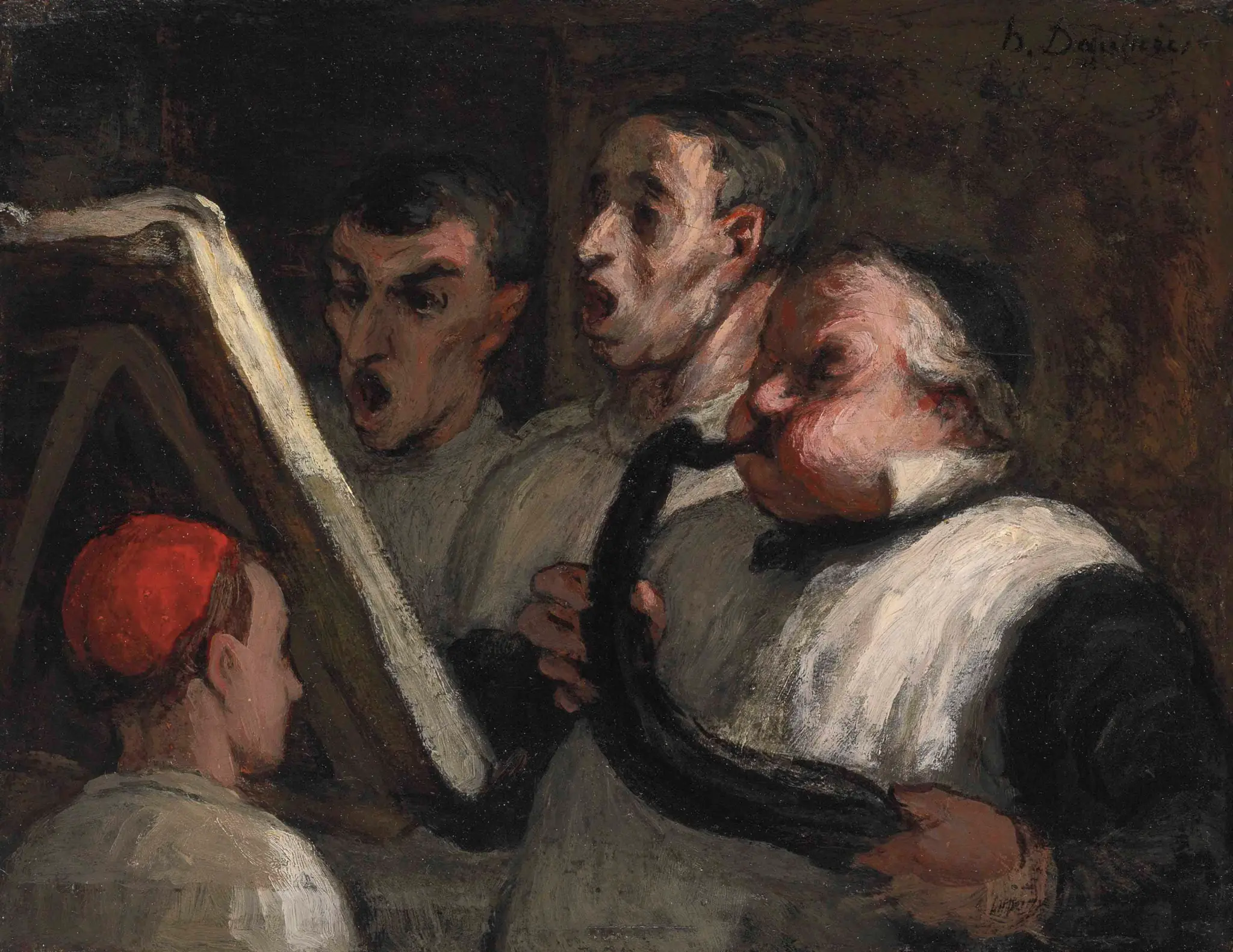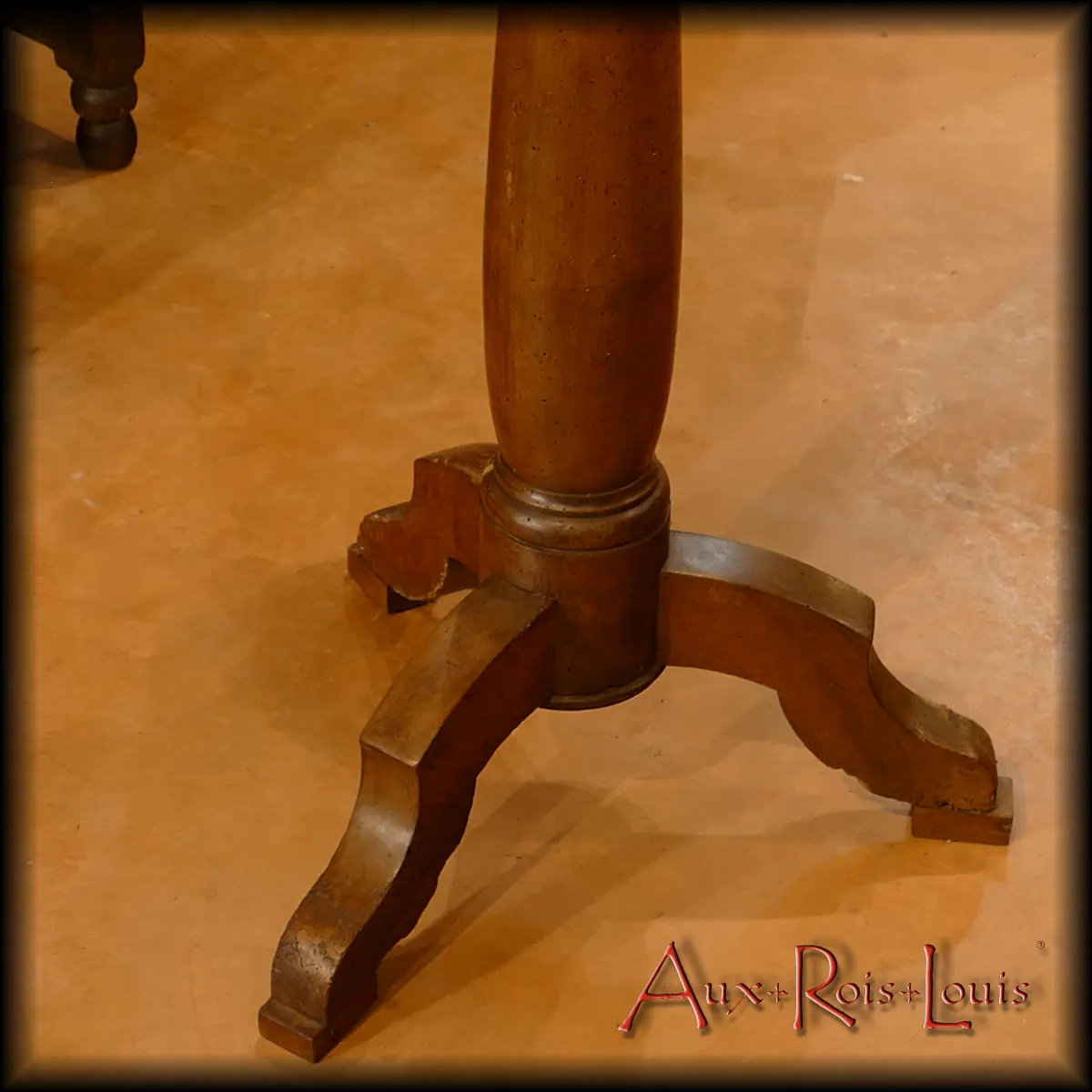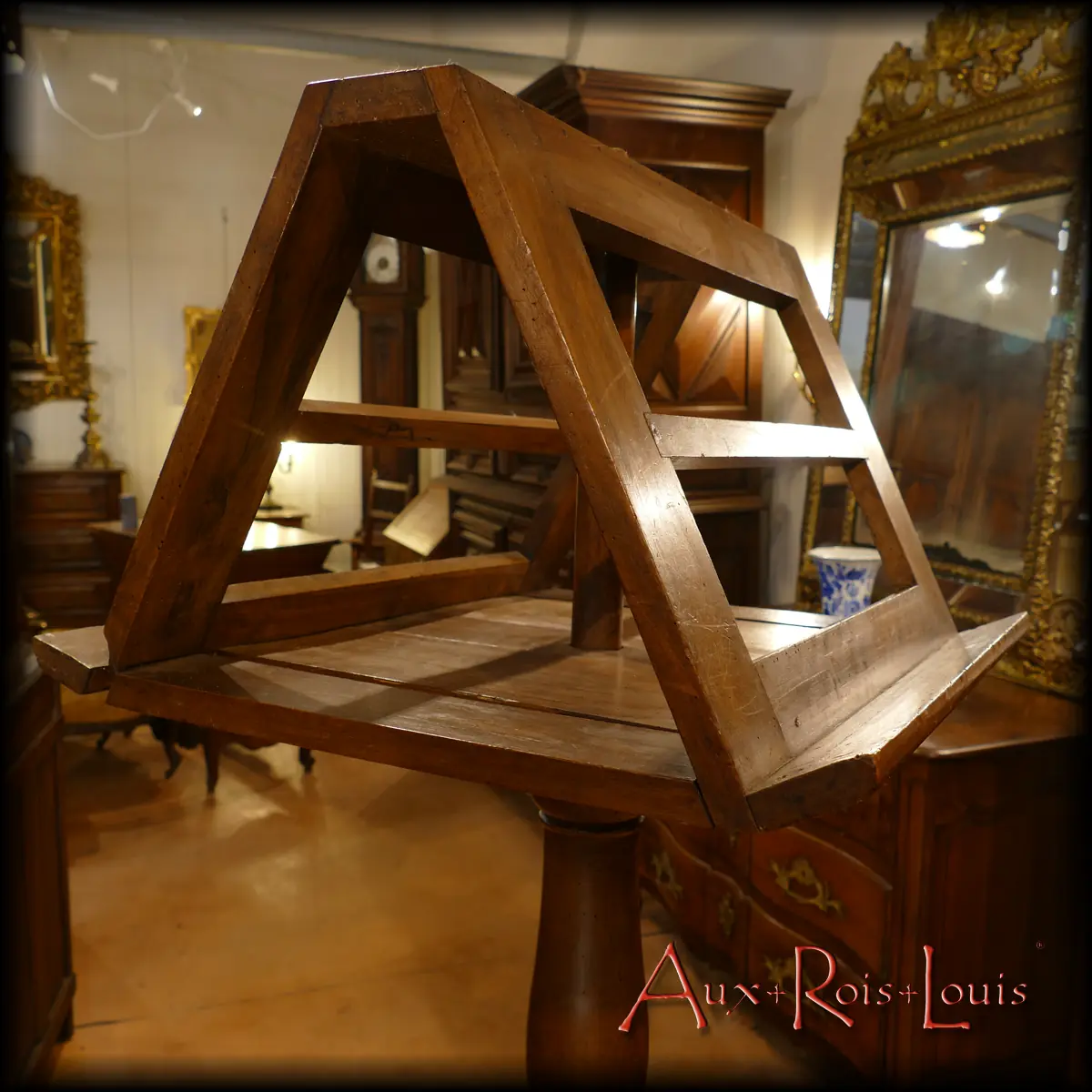Originally of medieval and religious origin, the lectern would have a dual life from the Renaissance onward. While continuing to support the weighty collections of liturgical chants, the lectern allowed itself to venture outside churches to accompany the troubadours of Occitania, who were proponents of a different way of love, the famous “fine amor” that delighted the princely courts of Southern France.
Musician’s Lectern in Walnut – Late 18th century – Southwest region of France – [ME109]
Given the height of this walnut lectern, one should imagine flutists and choristers following their sheet music rather than a priest reading his sermon. This double music stand belongs more to the realm of music than to the religious domain. It is worth noting that this late 18th-century lectern, which could have held the scores of both Lully and Mozart, is in perfect condition. Its “root”-style base is balanced on three legs arranged like the roots of a tree. This double-sided music stand is openwork and swiveling, giving it transparency and maneuverability. An unusual and appreciated feature, this double stand rests on a solid wooden tablet, ensuring its stability.
Dimensions
Height: 167 cm, width: 60 cm, depth: 58 cm.
Reference : [ME109]

![Musician’s Lectern in Walnut – Late 18th century – Southwest region of France – [ME109] Here is an antique musician's lectern made of walnut from the 18th century in the Southwest region of France. It features a double openwork music stand resting on a solid wooden tablet, which contributes to its stability. Its base consists of three legs arranged in the manner of tree roots, ensuring its balance.](https://www.aux-rois-louis.com/wp-content/uploads/2023/07/ME0109_P1660615-1200x600.webp)

![Musician's Lectern in Walnut – Late 18th century – Southwest region of France – [ME109] Here is an antique musician's lectern made of walnut from the 18th century in the Southwest region of France. It features a double openwork music stand resting on a solid wooden tablet, which contributes to its stability. Its base consists of three legs arranged in the manner of tree roots, ensuring its balance.](https://www.aux-rois-louis.com/wp-content/uploads/2023/07/ME0109_616.webp)

